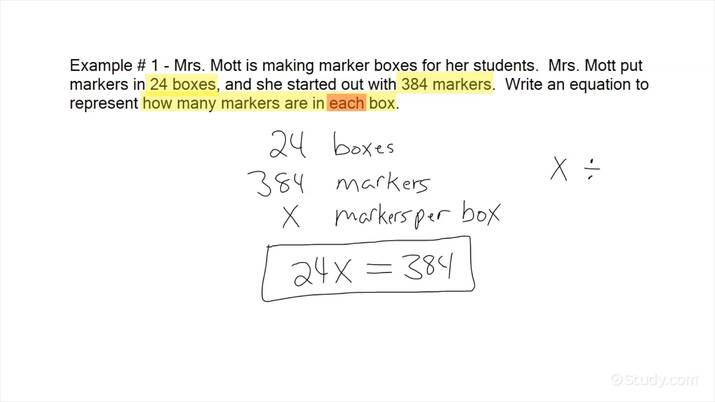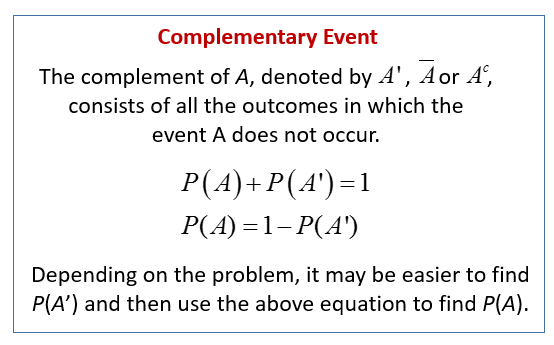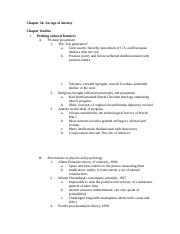How To Solve A Real-world Problem By Writing An Equation
Writing equations to solve real-world problems is an essential skill in mathematics. Equations provide a way to express a relationship between two or more variables, allowing us to solve for a particular unknown quantity. Writing an equation to solve a real-world problem involves understanding the problem, identifying the variables, and then writing an equation that represents the problem. By using the principles of algebra, equations can be written to solve for a variety of real-world problems. Writing equations can be used to solve problems in fields such as physics, engineering, and economics.
What is a Real-world Problem?
A real-world problem is an issue that affects people in their daily lives. It can be anything from an environmental issue, an economic issue, or a social issue. Solving a real-world problem requires a deep understanding of the issue and the context in which it exists. Writing an equation can be a great way to help identify the root cause of a problem and provide a solution. Equations can be used to explain the relationships between different variables and their effects on a problem. With the right equation, a problem can be solved in a clear and concise way.
Equations can also be used to create simulations of real-world events. This can help to evaluate the impact of different solutions on a problem and determine the best one. By writing out the equation, it is easier to identify which variables need to be adjusted and how much they will affect the outcome. This is a great way to ensure that a solution will be effective and provide the desired results.
By writing out equations, problem-solvers can identify the underlying structure of a problem and use it to find the best solution. With the right equation, problem-solvers can quickly identify the cause of a problem and evaluate different solutions. This is a great way to help solve real-world problems.
Identifying the Key Variables of a Real-world Problem
When attempting to solve a real-world problem with an equation, the first step is to identify the key variables of the problem. Variables are objects or numbers that can change, and these are what the equation will be based on. Different problems can require various kinds of variables, ranging from simple numbers to complex concepts. For example, when solving a problem involving the motion of a ball, some key variables could include the ball’s initial velocity, acceleration due to gravity, and time elapsed. Once these key variables are identified, they can be used to create an equation that accurately describes the situation. This equation can then be used to calculate values such as final velocity or total distance traveled. In order to accurately create equations, it is important to understand the relationships between variables and how they interact with each other. With this knowledge, equations can be constructed that accurately describe the problem at hand.
Writing an Equation to Represent the Problem
Writing an equation to represent a real-world problem can be a difficult task. However, with the right knowledge and approach, it is possible to develop a successful equation that accurately reflects the problem. The first step is to identify the variables and constants. Variables are the values that can change, such as the number of people in a room or the speed of a car. Constants are the values that remain the same, such as the gravitational force or the cost of a product. Once the variables and constants have been identified, the equation can be created by combining these elements in a logical way.
Next, the mathematical operations required to solve the problem need to be determined. This includes addition, subtraction, multiplication, division, and exponentiation. Once the operations are determined, the equation can be written down using the appropriate symbols. Finally, the equation can be tested by substituting different values for the variables and constants and checking that the results match the expected values.
By following these steps, it is possible to create an equation to represent a real-world problem. This equation can then be used to solve the problem and generate accurate results. With practice, writing equations to represent real-world problems can become easier and more effective.

Solving the Equation
Writing equations to solve real-world problems is an invaluable skill that can help you understand a variety of topics, from science and math to economics and engineering. By learning how to write an equation to solve a problem, you can develop the ability to think critically and logically to solve complex problems. Writing equations is a great way to develop problem-solving skills and is an essential part of any math curriculum.
When writing an equation to solve a problem, you must first identify the variables that are involved. Once you have identified the variables, you can then write an equation that includes each of the variables and the operations that need to be performed on them. Depending on the complexity of the equation, you may need to use algebraic equations or more complex equations.
Once you have written the equation, you can then use it to solve the problem. This involves plugging in values for the variables and then solving the equation to get the desired result. You can also use the equation to make predictions about the results of a given situation.
Writing equations to solve real-world problems is an important skill to learn if you want to be successful in math and science. Equations allow you to think logically and critically about problems and develop better problem-solving skills. With practice, you can learn how to write equations to solve a variety of real-world problems.
Verifying the Solution
Verifying the solution of a real-world problem is an important step in the problem-solving process. To ensure that the solution obtained is correct, it is essential to check that all the conditions of the problem have been met. The best way to do this is to write the equation that describes the problem and then solve it.
Using the appropriate equation can help to confirm that the solution obtained is in fact valid. An equation may be used to test the solution in a variety of ways. For instance, the equation can be used to check if the values obtained are consistent with the given information, or to check if the units of the solution are correct.
In addition, equations can be used to check if the solution obtained is a local or global optimum. While a local optimum is the best value that can be obtained from the solution, a global optimum is the best value that can be obtained from all possible solutions.
Writing an equation can also be used to check if the solution obtained is a maximum or minimum. This can be done by taking the derivative of the equation and setting it to zero. If the derivative is positive, then the solution is a maximum, and if the derivative is negative, then the solution is a minimum.
By writing an equation to solve a real-world problem, it is possible to verify the solution and ensure that it is the most optimal one. This process is essential to ensure that the problem is solved correctly and efficiently.
Applying the Solution to the Real-world Problem
Applying the solution to a real-world problem is a key step in the problem-solving process. Writing an equation is the most efficient way to solve a real-world problem as it allows us to accurately determine the value of a given variable. By writing an equation, we can identify the relationships between the variables, determine the values of the variables, and ultimately use the equation to solve the problem.
When solving a real-world problem using an equation, it is important to remember the following: identify the problem, gather information about the problem, define the variables, write the equation, solve the equation, and interpret the solution. It is also important to check the answer to ensure that it is correct. When applying the solution to the real-world problem, it is important to consider the implications of the solution. What is the impact of the solution? Will it be beneficial or detrimental to the problem? Ultimately, the solution should provide a positive outcome to the problem.
By writing an equation and applying the solution to the real-world problem, we can better understand the problem and create a viable solution. By understanding the relationships between the variables and formulating an equation, we can effectively solve the problem and apply the solution to the real-world.
FAQs About the How To Solve A Real-world Problem By Writing An Equation
1. What is the best way to start solving a real-world problem with an equation?
Answer: The best way to start solving a real-world problem with an equation is to first identify the variables involved in the problem and then write out all the known information. After that, use the algebraic equation to determine the unknown values.
2. What types of real-world problems can be solved with an equation?
Answer: Real-world problems that can be solved with an equation include problems involving rates, distance, time, work, and probability.
3. What should I do if I am stuck solving a real-world problem with an equation?
Answer: If you find yourself stuck trying to solve a real-world problem with an equation, try breaking the problem down into smaller, more manageable pieces. Additionally, it can be helpful to draw a diagram or graph to visualize the problem. Finally, don’t be afraid to ask for help if you need it.
Conclusion
Writing equations to solve real-world problems can be a helpful way to approach a problem. By writing out the equations, you can more easily identify what variables are involved in the problem and what steps need to be taken to reach a solution. Additionally, you can use equations to represent the relationships between the given data and the desired outcome. With some practice, you can become an expert at using equations to solve real-world problems.







